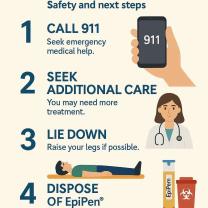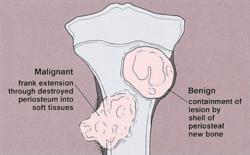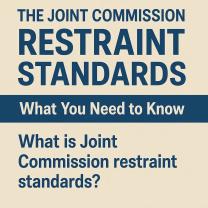What are the symptoms of a poorly performing left ventricle?
The left ventricle is a crucial part of the heart responsible for pumping oxygen-rich blood to the rest of the body. When it is not functioning properly, it can lead to various symptoms and health issues. These symptoms may indicate a poorly performing left ventricle and can be signs of heart problems:
Shortness of Breath (Dyspnea):
- One of the primary symptoms of left ventricle dysfunction is difficulty breathing, especially during physical activity or when lying down. This can be due to fluid buildup in the lungs, a condition known as pulmonary congestion.
Fatigue:
- Feeling unusually tired, weak, or fatigued, even with minimal exertion, is a common symptom of a poorly functioning left ventricle. The heart may not be pumping enough blood to meet the body's demands.
Edema (Swelling):
- Fluid retention and swelling, often in the ankles, legs, and abdomen, can occur when the left ventricle is not effectively pumping blood. This condition is known as congestive heart failure (CHF).
Reduced Exercise Tolerance:
- Individuals with left ventricle dysfunction may find it challenging to engage in physical activities and may experience exercise intolerance.
Chest Pain or Discomfort:
- Chest pain, pressure, or discomfort, which may be angina, can be a symptom. This can result from reduced blood flow to the heart muscle due to a poorly performing left ventricle.
Irregular Heartbeat (Arrhythmias):
- Left ventricle dysfunction can lead to irregular heart rhythms, such as atrial fibrillation, ventricular tachycardia, or other arrhythmias.
Cough:
- A persistent, dry cough can be a sign of heart failure, as fluid can accumulate in the lungs and trigger coughing.
Palpitations:
- Feeling strong, rapid, or irregular heartbeats can be a symptom of left ventricle dysfunction, often associated with arrhythmias.
Dizziness and Fainting (Syncope):
- Reduced blood flow to the brain can result in dizziness, lightheadedness, or fainting.
Sudden Weight Gain:
- A sudden, unexplained weight gain may be due to fluid retention associated with heart failure.
It's important to note that left ventricle dysfunction can be caused by various heart conditions, including coronary artery disease, cardiomyopathy, heart valve problems, and high blood pressure. If you experience any of these symptoms or have concerns about your heart health, it is crucial to seek medical attention promptly. Early diagnosis and treatment can help manage the condition and improve your heart's function and overall well-being.
Recognizing Symptoms of a Poorly Performing Left Ventricle
The left ventricle is the main pumping chamber of the heart. It is responsible for pumping blood out to the rest of the body. When the left ventricle is not performing well, it is called left ventricle dysfunction (LVD).
There are a number of symptoms that can be associated with LVD, including:
- Shortness of breath, especially with exertion or when lying down
- Fatigue
- Swelling in the feet and ankles
- Chest pain
- Coughing
- Wheezing
- Rapid heartbeat
- Lightheadedness or dizziness
If you are experiencing any of these symptoms, it is important to see a doctor right away.
Understanding the Impact of Left Ventricle Dysfunction
LVD can have a number of serious consequences, including:
- Heart failure: When the left ventricle cannot pump enough blood to the body, it can lead to heart failure. Heart failure is a serious condition that can be life-threatening.
- Arrhythmias: LVD can increase your risk of developing arrhythmias, which are abnormal heart rhythms. Arrhythmias can be dangerous and can lead to sudden cardiac death.
- Stroke: LVD can also increase your risk of stroke. Stroke occurs when the blood supply to the brain is interrupted. Stroke can cause brain damage and can be life-threatening.
Medical Evaluation and Diagnostic Tests for LV Dysfunction
If your doctor suspects that you may have LVD, they will order a number of tests to confirm the diagnosis and assess the severity of the condition. These tests may include:
- Echocardiogram: An echocardiogram is an ultrasound of the heart. It can be used to measure the size and function of the left ventricle.
- Stress test: A stress test is a test that measures how the heart performs under stress. It is typically done on a treadmill or exercise bike.
- Cardiac catheterization: A cardiac catheterization is a procedure that involves inserting a thin tube into a blood vessel in the arm or leg and threading it up to the heart. This procedure can be used to measure blood pressure and oxygen levels in the heart and to assess the function of the heart valves.
Treatment Options and Lifestyle Changes for LV Improvement
The treatment for LVD will vary depending on the cause and severity of the condition. Treatment options may include:
Medications: There are a number of medications that can be used to treat LVD. These medications can help to strengthen the heart muscle, improve blood flow, and reduce the risk of complications.
Surgery: In some cases, surgery may be necessary to treat LVD. Surgery may involve repairing or replacing a damaged heart valve, or bypassing a blocked coronary artery.
Lifestyle changes: There are a number of lifestyle changes that can help to improve LV function. These changes include:
- Quitting smoking
- Eating a healthy diet
- Exercising regularly
- Maintaining a healthy weight
- Managing stress
Living with LV Dysfunction: Coping and Supportive Care
Living with LVD can be challenging, but it is important to remember that you are not alone. There are a number of resources available to help you cope with your condition and manage your symptoms.
Some things that you can do to live well with LVD include:
- Educating yourself about your condition: The more you know about LVD, the better equipped you will be to manage your symptoms and live a full and active life.
- Working with your doctor to develop a treatment plan: Your doctor can help you to develop a treatment plan that is right for you. This plan may include medications, lifestyle changes, and/or surgery.
- Joining a support group: Support groups can be a great way to connect with other people who are living with LVD. These groups can provide support, advice, and a sense of community.
LVD is a serious condition, but it is possible to live a long and fulfilling life with it. By working with your doctor and making healthy lifestyle choices, you can manage your symptoms and reduce your risk of complications.













